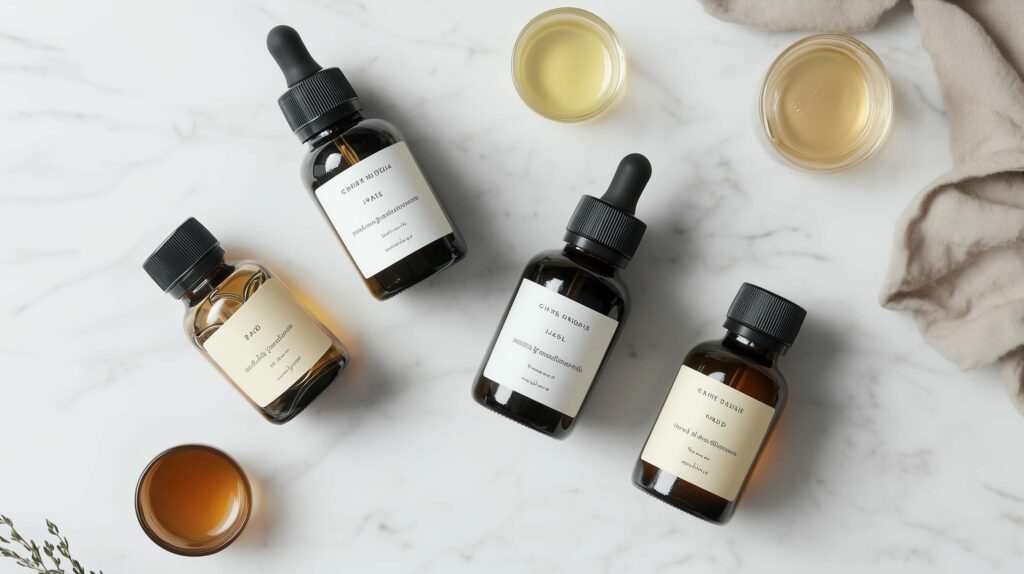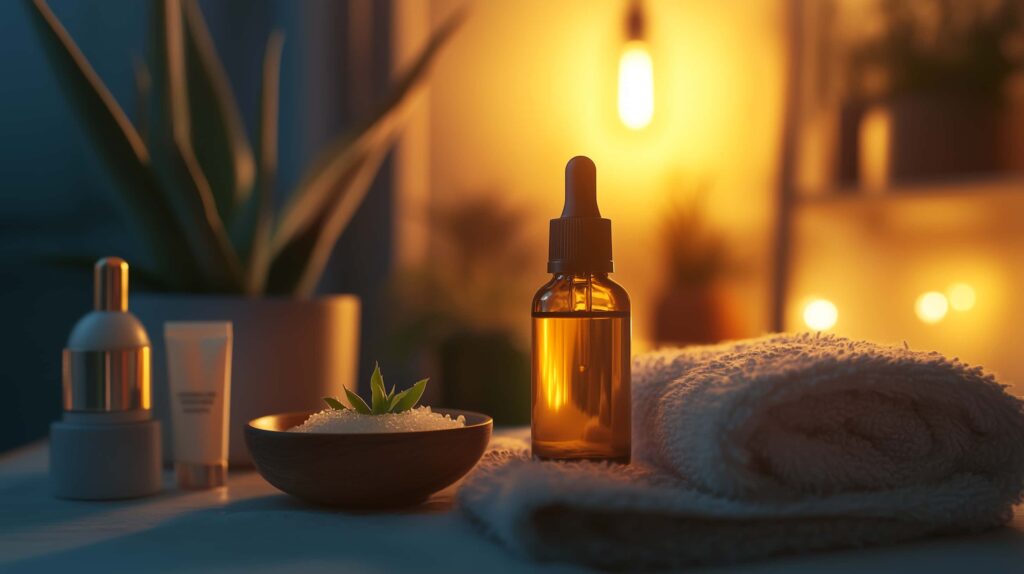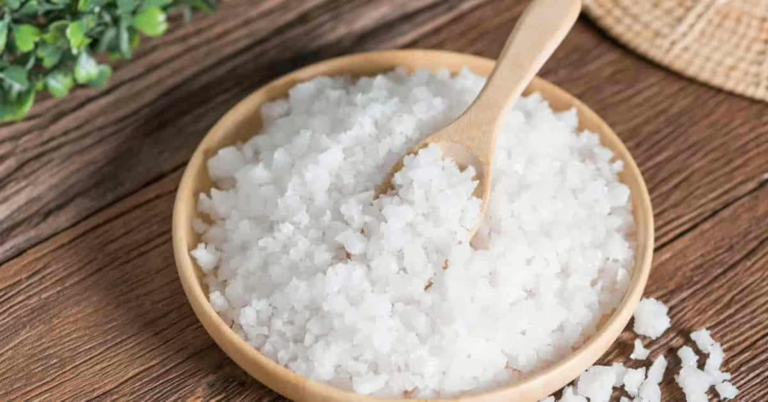Oils and Acne: The Shocking Truth You Need to Know
When it comes to skincare, the use of oils has always been met with a mix of intrigue and uncertainty, especially for those battling acne. Is it possible that something as simple as oil can be both a friend and a foe to your skin? This question lingers in the minds of many, creating a cloud of confusion.
We’re here to cut through this fog of doubt, separating fact from fiction. By diving deep into the world of skincare oils, we aim to provide you with actionable advice that demystifies their effects on acne-prone skin. Let’s embark on this journey to clarity together.
Understanding Oils: Types and Their Effects on Skin

Not all oils are created equal, especially when it comes to their impact on your skin. The fundamental difference lies between comedogenic and non-comedogenic oils, terms that might sound complex but simply refer to whether an oil is likely to clog pores or not. Comedogenic oils, like coconut oil, have a higher propensity to block pores, leading to breakouts, especially for those with oily skin. On the flipside, non-comedogenic oils such as jojoba oil, are far less likely to cause such issues, offering a safer choice for acne-prone skin.
Understanding the effects of these oils on different skin types is crucial. For instance, individuals with dry skin might find relief in oils higher in oleic acid, which can nourish and moisturise. However, for someone with oily skin, opting for oils rich in linoleic acid, known for its lighter texture and ability to help regulate sebum production, might be more beneficial. This distinction is not just about dry versus oily skin but about finding the right balance that your skin needs.
Moreover, the source of the oil plays a significant role in how it interacts with your skin. Synthetic oils, often found in commercial skincare products, can have a different effect compared to their natural counterparts. The latter is typically more gentle and can be more easily accepted by the skin, minimizing the risk of irritation or adverse reactions.
It’s also worth noting that the method of oil extraction and processing can impact its quality and effectiveness. Cold-pressed oils, for example, retain more of their natural nutrients and beneficial properties, making them a superior choice for skin care. This is why, when choosing an oil for your skincare routine, it’s important to consider not only its type but also its quality and origin.
Lastly, the way you apply these oils can make a significant difference. A common mistake is applying too much oil or using it too frequently, which can exacerbate skin issues rather than alleviating them. Learning the right techniques and quantities is key to harnessing the benefits of oils without overwhelming your skin.
Comedogenic Scale: What It Means for Acne-Prone Skin

Imagine a traffic light for your skin, guiding you on what products to use or avoid to prevent acne breakouts. That’s essentially what the comedogenic scale is – a rating system that classifies oils and other skincare ingredients based on their likelihood to clog pores. Ranging from 0 (least likely to clog) to 5 (most likely), this scale helps you make informed choices about the products you apply to your skin.
For those navigating the tricky waters of acne-prone skin, understanding where your chosen oil falls on this scale is crucial. Opting for oils with a lower comedogenic rating can significantly reduce the risk of exacerbating acne. It’s about making educated decisions that align with your skin’s unique needs, ensuring that you’re nurturing it without inadvertently causing more harm.
It’s also important to remember that skin’s response to different oils can be highly individual. What might be non-comedogenic for one person could still trigger breakouts in another. Therefore, incorporating new oils into your skincare routine should be done gradually, paying close attention to how your skin reacts over time. This personalized approach is key to unlocking the benefits of oils for your acne-prone skin.
The Role of Fatty Acids in Skin Health

Fatty acids in oils play a pivotal role in determining how they affect your skin, particularly when it comes to managing oily and dry skin types. Linoleic acid, for instance, is a wonder for oily skin, offering a lighter feel and helping regulate natural oil production. In contrast, oleic acid is a boon for dry skin, providing much-needed moisturisation and nourishment.
This difference in fatty acid composition means that not all oils are suitable for all skin types. Selecting an oil that complements your skin’s natural tendencies can lead to a more balanced, healthier complexion. Whether your skin craves the deep moisturising benefits of oleic acid or the sebum-regulating properties of linoleic acid, there’s an oil out there that’s likely a good match for your needs.
Furthermore, the scientific community acknowledges the importance of fatty acids in promoting skin health. They are not just moisturisers; they play a crucial role in maintaining the skin’s barrier function, offering protection against environmental stressors and aiding in the healing process. Understanding the science behind these fatty acids can guide you to make choices that enhance your skin’s natural resilience and beauty.
Benefits of Certain Oils for Acne-Prone Skin

While the thought of applying oil to acne-prone skin might seem counterintuitive, certain oils can offer surprising benefits. Tea tree oil, for instance, is celebrated for its antibacterial properties, making it an excellent choice for targeting acne-causing bacteria. Similarly, rosehip oil, rich in linoleic acid, not only helps regulate oil production but also supports skin regeneration, helping to fade acne scars.
Jojoba oil is another hero for acne-prone skin, mimicking the skin’s natural sebum, thereby tricking the skin into producing less oil. Its balancing effect can be particularly beneficial for those struggling with oily skin. Additionally, the anti-inflammatory properties of these oils mean they can help soothe irritated skin, reducing redness and swelling associated with acne breakouts.
The scientific backing for these benefits is growing, with studies highlighting the positive effects of these oils on acne. For example, research on tea tree oil has shown its effectiveness in reducing acne lesions, making it a viable alternative to harsher chemical treatments. This scientific evidence supports the idea that, when chosen carefully and used correctly, certain oils can indeed be a boon for acne-prone skin.
However, it’s not just about choosing the right oil; it’s also about how that oil is sourced and processed. Cold-pressed, organic oils are often recommended due to their higher quality and purity, which can make a difference in their effectiveness and the likelihood of causing irritation.
Lastly, it’s essential to integrate these oils into your skincare routine in a way that respects your skin’s limits. Overuse or improper application can lead to adverse effects, even with oils known for their skin-friendly properties. The key is to use them judiciously, paying attention to how your skin responds and adjusting your routine accordingly.
How to Incorporate These Oils into Your Routine

Introducing oils into your skincare routine requires a thoughtful approach, especially if you have acne-prone skin. Start with a patch test to ensure you don’t have an adverse reaction. Apply a small amount of oil to a discreet area of your skin, wait 24 hours, and observe how your skin reacts. If there’s no sign of irritation or breakouts, you can proceed with more confidence.
When incorporating oils into your daily skincare, less is more. A few drops are often all you need, either applied directly to the skin or mixed with your regular moisturiser for an extra nourishing boost. This method helps ensure that you’re not overwhelming your skin with too much product, which can lead to clogged pores and breakouts.
Using oils as a cleanser can also be an effective way to remove impurities while maintaining your skin’s natural moisture balance. Apply the oil to dry skin, massage gently to lift dirt and makeup, then rinse with warm water or wipe away with a soft cloth. This cleansing method can be particularly gentle and hydrating, making it a suitable option for both oily and dry skin types.
Common Concerns and Mistakes with Oils

Many people worry that using oils on their face will lead to breakouts or make their skin greasier. It’s understandable why you might think this, especially if you have oily skin. However, the truth is, certain oils can actually help balance oil production and support healthy skin. The key is to use them sparingly and choose the right ones for your individual skin needs.
Another common concern is that oils will not penetrate the skin, sitting on the surface and causing a greasy feeling. This is where choosing the right oil and application method makes a difference. Lightweight oils, when applied correctly, can be absorbed effectively, leaving your skin hydrated without a heavy residue.
Some people also fear that oils will interfere with their basic skin care routine, making products like sun protection or face cream less effective. However, when used as part of a thoughtful skincare regimen, oils can enhance the efficacy of other products, helping to lock in moisture and nutrients.
There’s also the misconception that all oils are the same. This couldn’t be further from the truth. Each oil has its own unique profile of benefits. Researching oils and understanding their properties will help you make informed decisions, ensuring you choose oils that complement your skin type and concerns.
Lastly, a significant mistake is neglecting to perform a patch test before fully incorporating an oil into your routine. This simple step can prevent potential reactions and ensure the oil is compatible with your skin.
Mistakes to Avoid When Using Oils

One of the biggest mistakes you can make is overusing oils. Your skin can only absorb so much, and applying too much can lead to clogged pores and breakouts. Start with a few drops and adjust based on how your skin responds. This will help maintain oil control and avoid overwhelming your skin.
Combining incompatible products is another error. Not all skincare ingredients play well together. For example, certain oils may not interact well with prescription acne treatments, leading to irritation or diminished effectiveness. Take the time to research or consult with a dermatologist to ensure your skincare products are compatible.
Finally, skipping a patch test is a risk you don’t want to take. Even if an oil is praised for its benefits, it might not suit everyone. Apply a small amount to a discreet area and wait 24-48 hours to observe any adverse reactions. This simple step can save you a lot of trouble and discomfort.
Realistic Expectations: What to Expect from Oils

While oils can be a wonderful addition to your skincare routine, it’s important to set realistic expectations. Oils are not a quick fix; they require time to show results. Consistency is key. Applying oil as part of your daily routine can help ensure you see improvements, but remember, it can take a few weeks to notice significant changes.
It’s also essential to consider lifestyle factors that affect your skin. Diet, hydration, stress levels, and sun exposure all play a role in the health of your skin. Oils can provide support, but they work best as part of a holistic approach to skincare.
Expect oils to provide hydration and support for glowing skin, but understand that they are not a standalone solution for skin problems. They work best when used in conjunction with a balanced skincare regimen that includes sun protection, gentle cleansing, and appropriate moisturization.
Lastly, be patient and give your skin time to adjust. Some oils might cause an initial purge, leading to a temporary increase in breakouts as your skin acclimates. This is normal for some individuals and should improve with continued use. Stay the course and adjust as needed based on how your skin responds.
Are Oils Suitable for All Skin Types?

The beauty of oils is that there’s an option suitable for every skin type, from oily to dry, combination, and sensitive skin. If you have oily skin, you might think oils are counterintuitive, but lightweight, non-comedogenic oils can actually help regulate oil production. For those with dry skin, oils can offer deep hydration, keeping the skin moisturized and plump.
Combination skin can benefit from oils by applying them strategically; only on dry areas or mixing a few drops into your regular moisturizer for added hydration. Sensitive skin types should look for oils with anti-inflammatory properties to soothe and calm the skin while avoiding any potential irritants.
To find the best oil for your skin type, start by doing a patch test and then introducing the oil slowly into your routine. Pay attention to how your skin reacts and adjust accordingly. Remember, less is more when it comes to applying oils, and a few drops are often enough to cover the entire face.
Lastly, be mindful of your skin’s needs, which can change with the seasons or due to other factors like stress or hormonal shifts. You may need to switch oils or adjust how often you use them to maintain balanced, healthy skin.
Myth vs. Reality: Summing Up the Debate
It’s time to bust the myth that all oils will clog pores and lead to acne. The reality is, the right oils can be a game-changer for your skincare routine, regardless of your skin type. By selecting oils based on their comedogenic rating and your individual skin concerns, you can enjoy the benefits without fear of breakouts.
Choosing the correct oil is essential. Not all oils are created equal, and what works for one person might not work for another. Through understanding the properties of different oils and how they interact with your skin, you can find a match that promotes radiant, healthy skin.
Let’s also remember the importance of consistency and patience. Incorporating oils into your skincare routine is not an overnight fix but a step towards long-term skin health. With the right approach, you can harness the power of oils to achieve glowing, hydrated skin.
Wrapping Up

Oils offer a world of benefits for your skin, from hydration to improved texture and even oil control. If you’ve been hesitant to incorporate oils into your skincare routine, now is the time to reconsider. With a thoughtful approach, you can find an oil that enhances your skin’s natural beauty without causing unwanted side effects.
Why not start by exploring an oil suitable for your skin type? Whether it’s a lightweight option for oily skin or a nourishing choice for dry skin, there’s an oil out there waiting to transform your skincare routine. Take the leap and discover the difference it can make for your skin.







